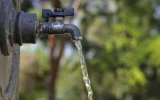What's the Minimum Land Required for Fish Farming?
To find out the land required for your fish farm, you must know the scale of production. If you want to go large-scale, more land is needed, but if you can do well with a small-scale farm, less land is required. Below, let’s look at the minimum land required for fish farming, depending on the extent of your goal.
A minimum of 50 acres is typically advised if you plan to go for modified extensive fish farming. Twenty acres of land can accommodate a medium-sized fish farm operation. If you have 5 acres of land or less, you can still succeed in fish farming through intensive methods.
The success of any fish farm relies on factors such as the desired fish species before committing to a specific land size. This article will list factors that further influence land requirements, such as location, accessibility, and water resources.
Summary
- The minimum land requirement for fish farming is 50 acres for extensive fish farms. For medium-sized fish farms, a minimum of 20 acres is required. For small-scale fish farms, at least 1 to 5 acres will be enough.
- The general rule when stocking fish in ponds is to put 50–100 bass, 50–200 catfish, and 1,000–1,500 bluegills for each acre of pond.
- There are various factors that influence the land requirements in fish farming, such as the location, accessibility of the land, water resources, the types of fish to raise, and the market demand for specific types of fish.

On this page:
Minimum Land Requirement for Fish Farming
You can farm on different-sized fish farms depending on your goal. The minimum land required for fish farming can vary depending on a variety of factors, such as the type of fish being raised, the production goals of the farm, and the available resources.
1. Extensive fish farms require a minimum of 50 acres
For extensive or modified extensive systems, a minimum of 50 acres or more is often recommended. A 50-acre parcel of land may be required if you have the following goals:
- To produce a large volume of fish
- To construct a variety of infrastructure and support facilities such as hatcheries, feed storage, waste treatment, and processing facilities
- To house large machinery for feeding, harvesting, and transporting the fish
- To raise large species of fish
Some species of fish require larger areas to grow extensively. Examples of these are salmon, tuna, and cod fish, which are also considered some of the best fish to farm for profit.
2. Medium-sized fish farms need at least 20 acres
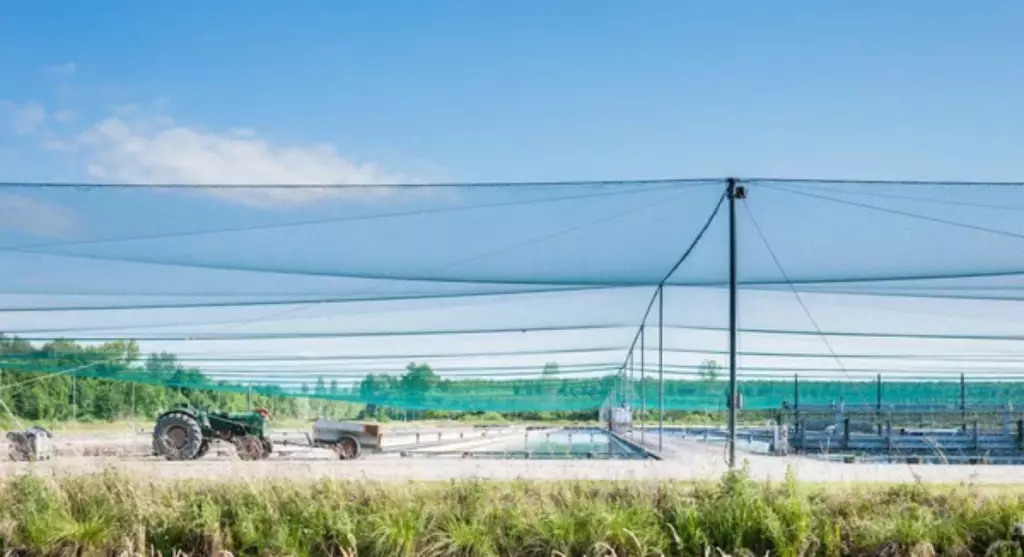
For a medium-sized fish farm, it is recommended to have a minimum of 20 acres of ponds. One or two acres of water will not generate sufficient income for a full-time operation. To generate $10,000 in income from a bait minnow farm, one would need a minimum of 20 acres of ponds, with each acre producing $500 in net income.
A 20-acre plot of land is suitable for fish farming if you have the following goals:
- To provide enough space to support a medium-sized operation
- To house necessary infrastructure and support facilities for a medium-sized fish farm
- To allow easier management compared to a larger operation while still allowing for a moderate level of production
3. Small-scale fish farms require 5 acres or less
A smaller land area allows for easier management and monitoring of fish farms. Small-scale fish farming can also employ methods such as integrated aquaculture, which combines fish farming with other forms of agriculture, to reduce waste and increase efficiency in a limited space.
A 5-acre parcel of land can feasibly house a small-scale fish farm. This size of land requires a lower investment in terms of land, equipment, and labor compared to larger farms. This makes it more beginner-friendly, as it suits small-scale farmers with limited resources.
The exact number of fish to stock in 5 acres is difficult to determine, but the general rule most farmers practice is putting 50–100 bass, 50–200 catfish, and 1,000–1,500 bluegills for each acre of pond water.
If you do not have enough space, even a 1-acre land can be utilized to raise fish in a pond, or in several tanks. You can stock these tanks with fish such as trout, catfish, and tilapia, which grow well even in limited spaces. With the right setup, this size of land can produce a marketable number of fish.
Factors Influencing the Land You Choose for Fish Farming
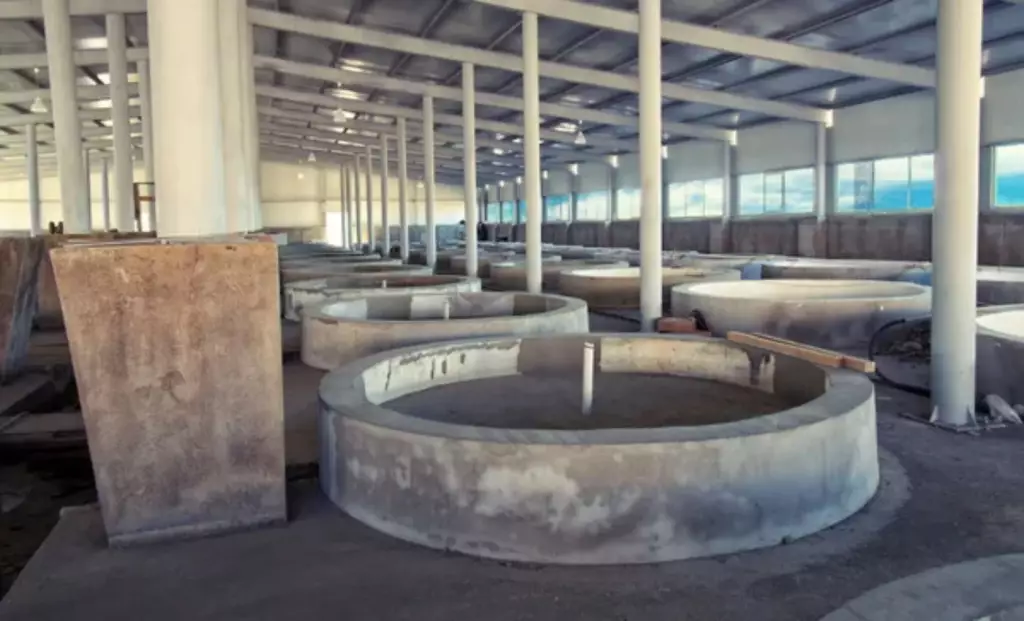
Site location must have basic necessities
Factors such as access to water, soil type, and surrounding infrastructure need consideration when selecting a site location. Ideal soil types for pond construction include clay or loam soil, which provides good water retention and stability.
The site must have easy access to electricity, to power water pumps, aeration, and other equipment. You may also want to check on the permits and licenses required for fish farming in your area.
The location of the land must be accessible
When choosing the location of your fish farm, perhaps you want to consider its proximity to markets and transportation facilities for smooth operations. Also, consider the development plans for the area, as industrial activity or urbanization can impact your farm's future.
You might want to consider a location that offers sufficient space for your pond design and construction while keeping in mind the environmental impact and potential regulations.
The land area must have a reliable water supply
The availability of water can also impact your land requirements. If there is a reliable water source nearby, less land may be needed for the fish farm. Conversely, if water needs to be transported over long distances, more land may be required for storage and distribution.
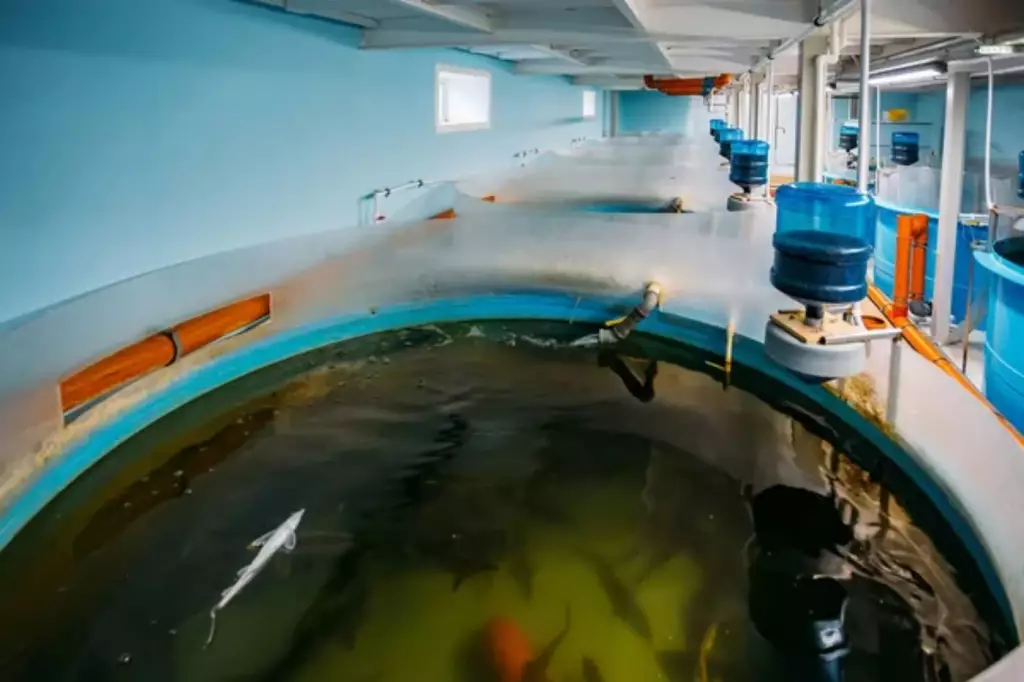
Some of the common water sources for fish farms include springs, wells, rivers, streams, lakes, surface runoff, groundwater, and municipal water, with groundwater as the most recommended source.
Choice of fish species and its effect on the land requirement
Fish species have different requirements for land area because they have different growth rates, feeding habits, and environmental needs. Many fish farmers carefully consider these factors when planning their operations to provide the best possible conditions for their fish and maximize their production efficiency.
Some species, like tilapia and catfish, can tolerate a wide range of water quality conditions and can survive in relatively small ponds. The fastest-growing species of fish in a fish farm are mostly tilapia species.
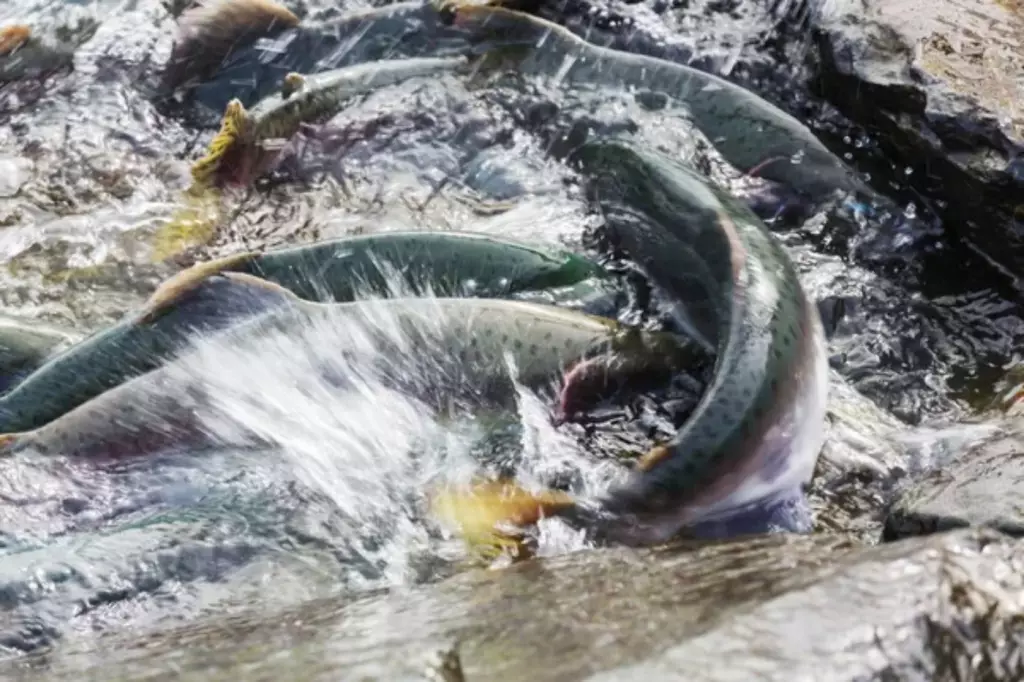
On the other hand, species like salmon and trout have more specific requirements for water temperature, oxygen levels, and water flow. For this reason, they often require larger land areas and more sophisticated technology to maintain optimal water quality conditions.
Market demand can impact land requirements for fish farming
High demand for a particular species of fish has forced fish farmers to increase their production to meet that demand. This can require additional land to be allocated for fish farming.
In previous years, there has been a growing demand for tilapia in many parts of the world, particularly in Asia and Latin America where fish farms have been expanded to meet the demand.
Similarly, the demand for salmon has led to the development of large-scale salmon farming operations in many parts of the world, particularly in Norway, Chile, and Scotland. These operations require significant amounts of land and water resources to maintain optimal conditions for salmon growth and production.

